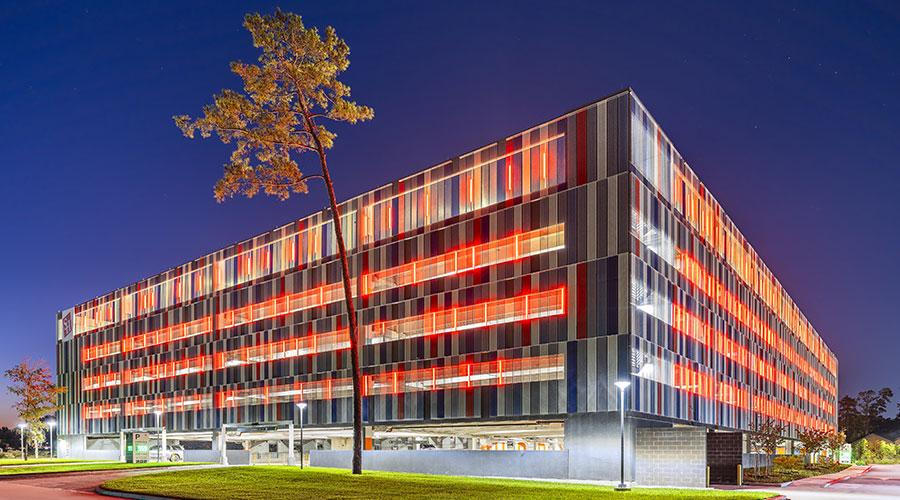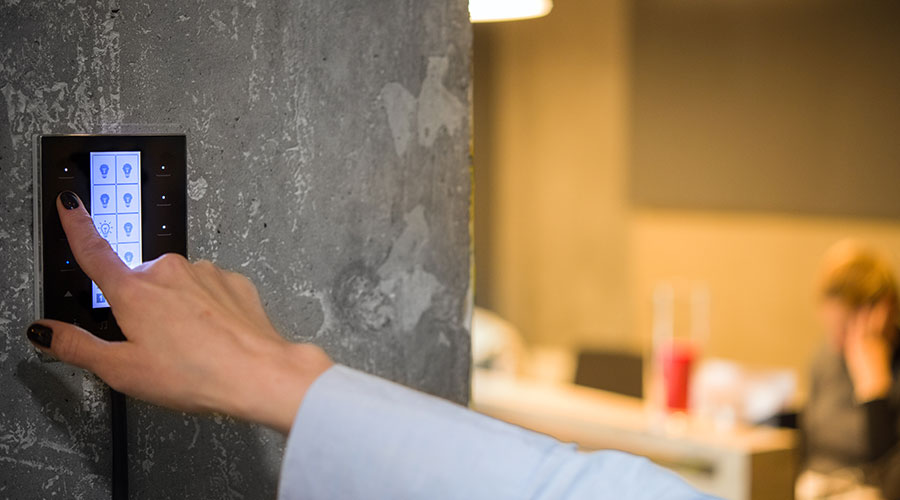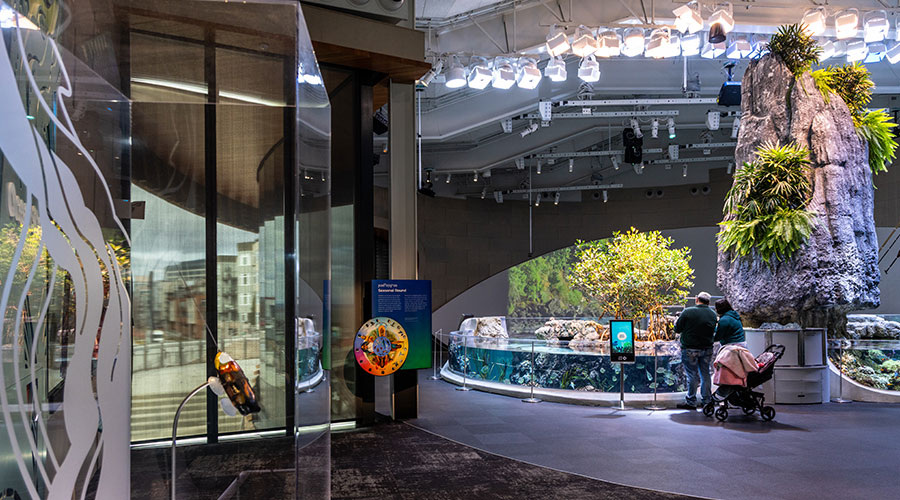Lamp Technology Answers User Demands
Maintenance and engineering managers are constantly on the lookout for lighting-system components that will deliver higher-quality and more cost-effective lighting to facilities.
In recent months, manufacturers have introduced advances in lamp technology that are designed to help reduce costs in several ways. More efficient lamps with higher lumen-per-watt ratings help to reduce facilities’ energy use, and lamps with longer life ratings reduce labor costs by extending re-lamping intervals. For managers looking to replace systems that use screw-base lamps, advances in lighting technology provide an array of retrofit options. See sidebar below
Developments by Type
Compact fluorescent lamps. For years, institutional and commercial facilities have used screw-base compact fluorescent lamps (CFLs) to replace incandescent bulbs. New CFL models are available with these improvements:
- a smaller ballast, the body part located just above the screw base
- 50 percent longer life, about 15,000 hours
- more consistent light output
- higher lumen maintenance.
Recent advances have reduced the lamps’ overall length, so managers now can use higher-wattage models in applications in which they could not be used just a few years ago. A new 42-watt (W) model has a shorter light center length and can replace 150-W incandescent bulbs in tight locations.
Managers can specify higher-wattage screw-base CFLs in high-ceiling applications, such as auditoriums. They also can use these lamps — including a new 138-W CFL — to replace some low-ceiling mercury vapor and metal halide (MH) lamps.
New high-wattage models also are available in the cool-appearance, 5,000K phosphor, so their light output appears similar to that of the high-intensify discharge (HID) lamps they replace. Some models feature mogul bases. This retrofit bypasses ballasts.
Cold-cathode lamps. These new lamps are ideal for signage because they can be dimmed, flashed and cycled. In addition, cold-cathode lamps are:
- rated for wet locations
- offer long life, about 25,000 hours
- are available in many colors and four shapes, including two globe sizes
- are available in 3- and 5-W models.
Linear fluorescent lamps. A new series of reduced-wattage T8 lamps arrived in the last few years. These 4-foot lamps have 30-, 28-, and 25-W ratings and have lower light output than standard T8 lamps. Before specifying these lamps, however, managers will need to weigh several considerations. The most important of these is savings. They do not save the difference in wattage that users might expect. For example, the 28-W lamp only saves 2-2.5 W, not the 4 W expected when replacing standard 32-W models.
They also have shorter life, and managers cannot pair these energy-saver lamps with dimming ballasts and some rapid- and program-start ballasts. Some of these reduced-watt T8 lamps will not operate properly on some electronic ballasts with some occupancy sensors.
Finally, managers should not use them below 60 degrees because they exhibit characteristics similar to reduced-wattage, 34-W T12 lamps — flickering, phosphor trails, and low light output.
Pin-based CFL lamps. One company has introduced a 28-W long twin-tube (LTT) lamp that managers can specify in place of 40-W LTT counterpart, burning on instant-start ballasts.
This lamp saves enough energy in long-burn applications to replace rapid- or programmed-start ballasts with instant-start products.
Metal halide lamps. In recent years, the use of standard MH lamps has declined, and pulse-start systems have become the most popular MH solution. But retrofit kits that convert standard MH fixtures to pulse-start have become much more widely accepted.
The most popular conversion kit — which contains a new lamp, ballast, starter, and socket, if required — is a 320-W pulse-start MH fixture, which converts 400-W standard MH fixtures. Retrofit lamps that operate on high-pressure sodium (HPS) ballasts provide a quick conversion to white light and serve as a temporary solution to the color problem of HPS systems. But they might not be good long-term solutions because the lamp life and light output are lower than optimum.
New Lamp Types
Larger-wattage, pin-base CFLs designed for high-ceiling applications now are available for new fixtures. Of particular interest is one model of high-lumen lamp, available with these specifications:
- 4,000 lumens, 60W, 7 inches
- 6,000 lumens, 85W, 9 inches
- 9,000 lumens, 120W, 12 inches.
These six-cluster lamps have a color rendering index of 86, feature four pins and are dimmable.
T5 lamps received a boost this year from the introduction of a new 2x4 fixture that is optimized for two standard, high-efficiency T5 lamps. One model can replace a three-lamp T8 2x4 parabolic fixture, and it offers energy savings of about 35 percent. A high-low model uses a step-dimming ballast that can connect to occupancy sensors for even greater energy savings.
A growing number of facilities also have installed T5 high-output (HO) lamps — so-called high-intensity fluorescent — used in high-bay fluorescent fixtures. Each fixture contains four to six 54-W lamps, depending on the ceiling height and required light level.
In many cases, the four-lamp fixture replaces a 400-W MH HID, high-bay fixture at about one-half of the power. T5 HO lamps offer about the same efficiency as T8 lamps but deliver higher lumen output.
Advances in lamp technology — and in other lighting-system components — undoubtedly will arrive on the market regularly. Managers who stay informed on these advances will be in a better position to keep their facilities’ lighting systems operating at peak efficiency and to provide occupants with the light they need to be productive.
John Fetters is principal of Effective Lighting Solutions Inc., a lighting consulting firm in Columbus, Ohio, that provides energy-effective solutions for a variety of clients.
LED-ing a Charge
Light-emitting diodes (LED) have garnered greater attention in the last year as product advances have allowed manufacturers to apply the technology to a growing number of applications in institutional and commercial facilities.
For example, one field study recently demonstrated that LEDs can provide an effective, energy-saving lighting alternative for incandescent downlights in elevators. The study used prototype LED fixtures to show energy savings of 45 percent, compared with the original incandescent lights. In the future, LED fixtures also might change the way elevator cabins are built, resulting in further energy savings. For more on the study, visit the web site of the Lighting Research Center at Rensselaer Polytechnic Institute, www.lrc.rpi.edu/resources/news.
Managers now can specify a portable wayfinding sign for emergencies. The sign has four chevrons with embedded LEDs that flash and direct people. Two small batteries power the sign.
Niche applications also use LEDs more often. For example, elevators that use R-12 incandescent lamps can use an LED equivalent.
LEDs also are available for drop-in, low-wattage MR-16 lamp replacements. A 3-watt (W) LED replaces a 20-W MR-16. The same 12-volt source — AC or DC — powers them. Some earlier models used clusters of LEDs, but newer models use one point source, providing a more focused beam.
Other LED applications include lighting for steps and aisles, theater marquees, underneath cabinets, and in coves. One inexpensive — $40 — drop-in retrofit kit mounts in a junction box found in aisle-side theatre or auditorium seats. This kit operates on 90-240-v AC power or low-voltage 12-24-v DC power.
Although LEDs use slightly more power than fluorescent lamps at room temperature, the light output of fluorescent lamps in cold environments can drop by up to 50 percent. But LEDs thrive in colder temperatures and use the same or less power for delivered light output.
While LEDs are a promising technology, manufacturers must overcome challenges before managers will look more closely into using LED-based products. But one good sign for LED technology comes from the Energy Policy Act, which provides government funding of the Next Generation Lighting Initiative. This funding will speed the development of solid-state lighting, whose goal is to produce a white LED that has 150 lumens per watt by 2012.
— John L. Fetters
RETURN TO ARTICLE
|
Related Topics:











